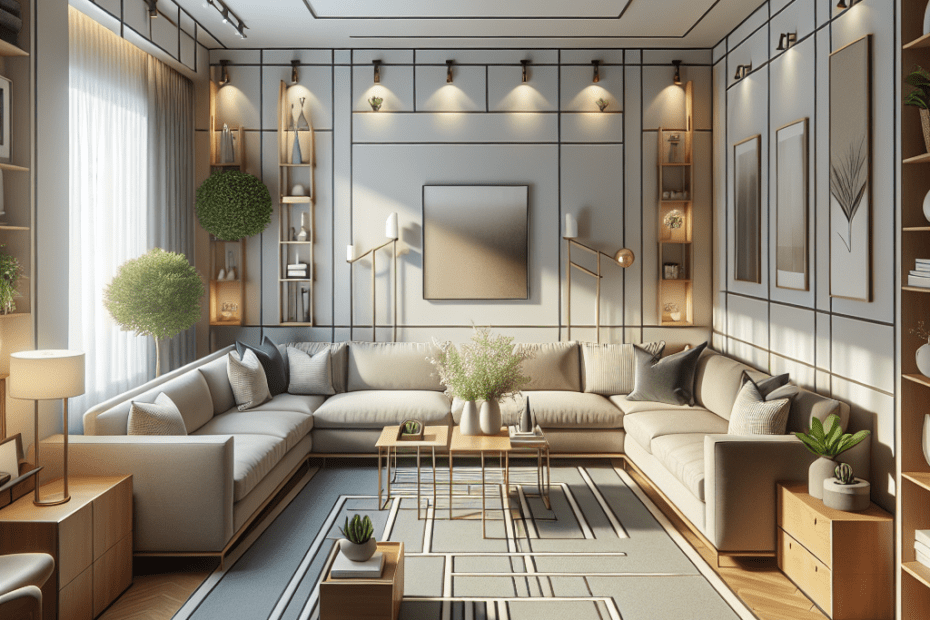“`html
The Best Furniture Layouts for Long and Narrow Rooms
When faced with the challenge of decorating a long narrow room, many find themselves puzzled about how to arrange their furniture effectively. Long narrow room furniture arrangements require creativity and strategic planning. They need solutions that balance functionality with aesthetics. According to a survey by Home Innovation Research Labs, 45% of homeowners find space optimization to be a top priority when designing rooms. This article will delve into the best furniture layouts for these challenging spaces.
Understanding the Space
Long and narrow rooms are often found in older homes, city apartments, or converted spaces. They sometimes serve as a multipurpose zone in homes — acting simultaneously as a living room, dining area, or office. The layout of such spaces plays a crucial role in determining the room’s usability.
Key Principles for Furniture Arrangement
- Focus on Flow: The flow of movement should be effortless in narrow rooms. Creating a clear path from one end to the other is essential.
- Balanced Look: Arrangements need to avoid clutter. Distributing furniture evenly throughout the room prevents an overcrowded appearance.
- Multipurpose Furniture: Pieces like benches with storage or foldaway tables help save space.
Strategic Furniture Arrangements
| Layout Style | Description |
|---|---|
| Parallel Arrangement | Placing two sofas or a combination of sofas and chairs facing each other to create a conversational area. |
| L-Shaped Layout | Utilizing the corners with sectional sofas which open up the opposite side for foot traffic. |
| Floating Furniture | Arranging furniture away from walls to break the hallway-like look, using rugs as anchors. |
| Zone Division | Using furniture to create distinct areas within the room, such as separating a living space and dining area. |
Using Accessories to Enhance the Space
Decorative items can aid in improving the perception of space in long narrow rooms. Mirrors create an illusion of depth, strategically placed to reflect light and add openness. Vertical art pieces draw the eye upward, emphasizing height over length. Shelves on the walls ensure storage without taking up precious floor space.
Color and Light Considerations
Light, airy colors lend a spacious feel. It’s recommended to use a monochromatic color scheme to maintain consistency, avoiding stark contrasts that may visually divide the room. Lighting, both natural and artificial, should be ample and well-distributed across the room to enhance its dimensions.
Statistics and Trends
As per a study published by the National Association of Realtors, 57% of homeowners consider room layout before investing in furniture. With urban living spaces becoming more compact, innovative furniture solutions remain in high demand. Research shows that proper use of furniture can increase room utility by up to 30%, as noted by the International Furnishings and Design Association.
Key Takeaways
- Understanding the unique challenges of long narrow rooms is crucial for effective layout planning.
- Creating a balanced and focused layout prevents clutter and maintains a smooth flow of movement.
- Incorporating multipurpose furniture and decorative elements like mirrors and vertical art enhances space.
- The right color schemes and lighting are essential in opening up and unifying the room’s look.
FAQ Section
- What is the best way to create a flow in a long narrow room?
Creating clear pathways from one end to the other and arranging furniture to define areas helps maintain fluid movement.
- How can mirrors be used effectively in narrow rooms?
Mirrors can be placed opposite windows to reflect light or on walls to create an illusion of depth, making the space seem larger.
- What kind of furniture is ideal for maximizing space in narrow rooms?
Multipurpose furniture such as storage benches, foldaway tables, or modular sofas can optimize available space.
- Which color palette is recommended for long narrow rooms?
Using light, neutral colors creates an open feel. A monochromatic color scheme helps maintain visual consistency.
- How can lighting enhance a narrow room?
Ample lighting, both artificial and natural, distributed evenly, can enhance the perceived dimensions of the room.
By understanding and applying these strategies, they can transform their long narrow rooms into aesthetic and functional spaces.
“`
